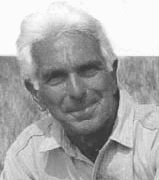Is Hypnosis Compatible with Non-Directive Process Work?
 Throughout life, we find ourselves forced to make choices, “Do I choose A, or do I choose B?” And in most instances, it is a false dilemma. Dichotomous reasoning leads us to think, “If I do one, I cannot do the other.” Yet, often, we can do both.
Throughout life, we find ourselves forced to make choices, “Do I choose A, or do I choose B?” And in most instances, it is a false dilemma. Dichotomous reasoning leads us to think, “If I do one, I cannot do the other.” Yet, often, we can do both.
This is why Ericksonian practitioners are able to do strategic, directive therapy and non-directive emotional process work within the context of hypnosis. The Ericksonian approach to hypnosis is not based on illusions of control but instead the stimulation of creative problem solving through exposure to novel experience. As the Ericksonian practitioner offers permissive suggestions, all the while being mindful to utilize whatever occurs, a great space is created, which the client fills with the spontaneous unfolding of emotion. For example, have you ever had someone start to laugh (uncontrollably) as you began your trance induction? If you are trying to control the client, the result will be anxiety or frustration on your part. However, if you know how to use permissive suggestion and emotional process work, then it can be a magical experience. (Recently, I was asked by Ryan Nagy to video a demonstration of me using hypnosis to help with anxiety-stress related symptoms. If you want to see how I responded to someone laughing at my induction, you can find the video at Ryan’s online conference. Note, there is a fee associated with the conference, it closes 2/8/16.)
So thought, in its most primitive form, uses only two boxes: good versus bad. By primitive, I don’t mean it’s “all bad.” Dichotomous reasoning works great in crisis situations (e.g., “To get hit by this oncoming car is bad, to step, very quickly, out of the way is good.”). But when there is greater time for reflection, it is useful to structure experience into several categories. I personally prefer four broad categories, because looking at life through four different angles allows for more complex reasoning than just three, but by the time you add in a fifth or sixth category, it starts to make analysis tiresome.
In order to organize and make sense of all that I have learned about therapy, I group all therapeutic action into one of four categories. As I suggest above, these are not mutually exclusive events, but rather different angles from which we can evaluate our work with clients.
First: Suggestive therapeutics. This may include formal hypnosis, or informal suggestions, such as when you convince a client that she is still a lovable person even if her parents did not treat her with love. I believe suggestion is an absolute necessity for most all patients—we all need validation and those in great distress need someone outside of themselves to provide direction and highlight new possibilities.
Second: Psychotherapy. This includes any effort to revisit the past, especially childhood memories. During psychotherapy, the client becomes very emotional and will often show signs of age regression. Most of us have seen the shift that occurs whenever information from childhood is shared. Deeply buried beliefs and core memories are exposed and thus made available for change.
Third: Coaching. This can include any type of psychoeducational approach or counseling used to “give the client tools.” The content of therapy is strategically aimed at immediate or future-oriented problem solving. It is basically teaching and motivational work, and is the basis of most brief forms of therapy.
Forth: Emotional process work. This is any activity that is intended to arouse emotion (i.e., feelings which are connected with outside situations or historical events). This is done to promote reflection, self-understanding, release emotional tension, social validation/affirmation, and increase emotional self-regulation. In addition to reflective listening, I include many forms of body work, sculpting, or psycho-drama in this category, since these are different means of arousing intense emotional experiencing.
I dissect my work this way, because it reminds me that there is more than one way to approach the task of doing therapy. This prevents me from staying stuck in just one approach. Each of these methods produce different effects and serve a different general purpose. Of course, each of us is free to come up with our own categories. But I would not stop there.
The highest form of thought has no boundaries and no categories. It is an amalgamation of conscious and unconscious reason, which flows forth in a type of spontaneous and effortless problem solving, identified in positive psychology research as “flow.” This is the state of mind I strive for when working with clients. It is an enjoyable experience that represents the best of what you have to offer. Each of us can obtain this level of thought anytime we challenge ourselves and freely draw upon skills that have been practiced and refined over the course of a lifetime.
So do not limit yourself to one or the other,
Do it all!
Dan Short, Ph.D.

 BOL: I hope our conversation will focus on the how-to of intervening in order to enhance the performance of organizations. You are a master of that art, but your most important work has focussed elsewhere: on understanding the nature of the organization,...
BOL: I hope our conversation will focus on the how-to of intervening in order to enhance the performance of organizations. You are a master of that art, but your most important work has focussed elsewhere: on understanding the nature of the organization,...  BOL: Alfred Adler’s name is better known to today’s therapists than are his ideas and methods. Your dedication to this body of work must be based on the belief that contemporary practice is diminished because Adler’s contributions are not...
BOL: Alfred Adler’s name is better known to today’s therapists than are his ideas and methods. Your dedication to this body of work must be based on the belief that contemporary practice is diminished because Adler’s contributions are not...